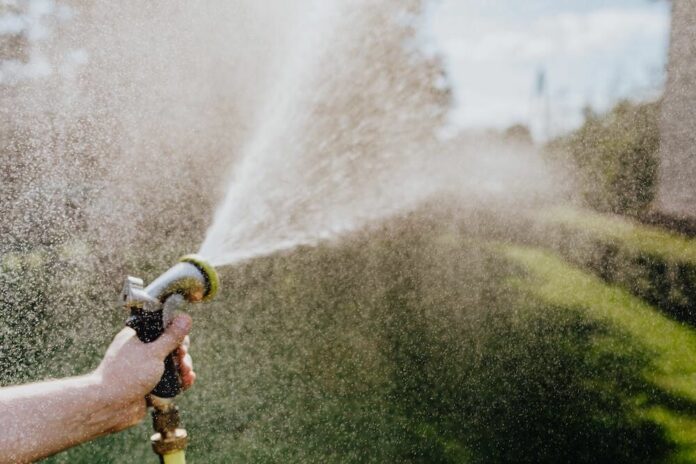Sebastopolians are about to have more stringent water use guidelines. The city is moving from requesting a voluntary 10% systemwide water reduction to making a 25% reduction mandatory. On July 6, the Sebastopol City Council unanimously voted in favor of a resolution bumping the city up to Stage 2 of its water conservation plan, a decision that reflects the sense of immediacy surrounding the drought.
Additionally, the council directed city staff to come back with water-saving measures geared toward businesses, since the water reduction measures passed primarily addresses residential use.
While the city is on its own municipal water wells, its superintendent of public works, Dante Del Prete, said that drought trends, including the water levels in the city water wells, favor the city adopting stricter water-saving measures.
“We continue to operate in a sustainable yield,” Del Prete said, adding that in order to ensure sustainability, the city needs to “get serious about monitoring our water use more effectively.”
According to Del Prete, the city is in the Russian River watershed but isn’t tied directly into Warm Springs Dam and other aquifers that Sonoma Water directly relies on.
“While Sebastopol residents have embraced the goals of water conservation, the trends are showing that the unforeseen future of this drought is leading us to believe that we should take additional conservation action,” he said.
Del Prete said that the last time the city implemented Stage 2 of its water conservation plan was in 2016.
“I think the reason we’re going to this now is because of the drought, not necessarily because of the severity of our usage,” said Vice Mayor Sarah Glade Gurney.
While the drought is the impetus for the conservation efforts rather than increased water use, Gurney encouraged residents to look into the water conservation reimbursements that the city has available.
Later on, a member of the master gardeners also recommended that members of the public with landscape-specific questions about maintaining landscaping while in a drought visit the master gardeners website, which outlines tips for managing drought while in an urban landscape.
Gurney asked what measures the city could ask local businesses to take in order to help water reduction, with the council agreeing to have city staff look into what measures the city could ask commercial
“These residential measures are smart and prudent and I’m in favor of this,” said Councilmember Patrick Slayter. “Let’s take a look at some of the commercial uses and see if we can come up with a parallel program that targets businesses. The percentage of water use that’s from commercial versus residential is one-quarter to one-fifth of what residential use is, so the amount of reduction there isn’t as noticeable, but there’s no reason why we can’t come (up) with something.”
Slayter also asked staff to look into if there are water conservation programs for businesses that might parallel the city’s BAYren water conservation reimbursement program.
Enforcing restrictions
When it comes to enforcement, Del Prete said that gentle, repeated education about water use is the first step when enforcing limitations on water use. Specifically, he said that the city’s municipal code outlines a three-infraction process, going up to a $500 fine.
Councilmember Neysa Hinton requested the council put in an additional adoption date, which would afford residents time to adopt water-saving measures.
“The first step of this is education — we’re going to knock on doors, we’re going to talk to people,” Del Prete said, adding that when the city adopted Stage 1 water conservation in May, the public works department distributed door tags that outlined best water use practices.
“We’re not going to be the heavy hammer right out of the gate. Of course, we need to educate … if we get to a scenario where somebody is not seeing the seriousness of it, we’ll address it accordingly,” Del Prete said.
While Del Prete said that the city has been seeing higher than usual rates of water use, he largely attributed the use differences to people spending more time at home during the pandemic and an increased number of community members starting to grow home gardens. A way to balance out use would be to encourage people to reevaluate ornamental landscape.
“I think if we really educate residential users and focus on toning back ornamental landscape and changing our mindset on what type of landscaping we do install in the future when we renovate, I do believe we could make a significant dent in our water use,” Del Prete said.








